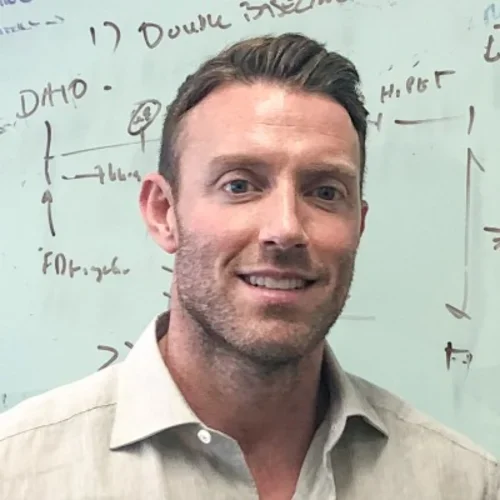
About
23-234 Center for Health Sciences
Positions & Affiliations:
Associate Professor, Molecular and Medical Pharmacology; Member, Neuroscience Program Area; Member, Ahmanson Translational Imaging Division; Member, Jonssonn Comprehensive Cancer Center Cancer Molecular Imaging, Nanotechnology and Theranostics Program Area
Biography:
Dr. David Nathanson is an Associate Professor of Molecular and Medical Pharmacology at UCLA. He received his Ph.D. from UCLA under Dr. Paul Mischel whereby he discovered a hide and seek resistance mechanism in which oncogenes located on extrachromosomal DNA can be dynamically eliminated in response to environmental pressures (e.g., drug) to maintain tumor growth. Dr. Nathanson conducted his post-doctoral work studying tumor metabolism, drug development and molecular imaging with Drs. Caius Radu and Johannes Czernin at UCLA. This led to the development of a new therapeutic approach, companion molecular biomarkers, and clinical drug candidates to target DNA metabolism in cancer. His current laboratory investigates the dynamic interplay between specific molecular alterations and critical functional processes (e.g., metabolism, apoptosis) in glioblastoma with the goal of developing new drugs and therapeutic strategies to exploit these functional vulnerabilities for improved patient outcomes. Dr. Nathanson is a former Scholar in Oncologic Molecular Imaging Fellow, recipient of the Ruth Kirschstein National Research Service Award by the NIH, and recipient of the STOP Cancer Award, Sanofi Innovation Award and the Johnny Mercer Foundation Award for brain tumor research.
Research Description:
The Nathanson Lab takes an integrated and interdisciplinary approach to study brain cancer and to identify new and more effective treatments for this disease. This consists of four primary research components including: 1) Develop clinically relevant preclinical models to investigate brain cancer 2) Investigate the critical functional biological processes that drive brain tumor growth and survival 3) Discover brain-penetrant therapeutics to induce brain tumor kill and 4) Incorporate molecular diagnostics including next generation sequencing and molecular imaging to identify brain tumors most likely to respond to a specific therapy
Current Lab Members
- Nicholas Bayley | Graduate Student | NBayley@mednet.ucla.edu
- Dimitri Cadet | Graduate Student | DCadet@mednet.ucla.edu
- Lisa Cha | Graduate Student | escha@mednet.ucla.edu
- Elizabeth Fernandez | Postdoc | efernandez@mednet.ucla.edu
- Armon Goshayeshi | Graduate Student | agoshayeshi@mednet.ucla.edu
- Jenna Minami | Graduate Student | jminami@mednet.ucla.edu
- Quincy Okobi | Graduate Student | QOkobi@mednet.ucla.edu
- Alan Olivero, Ph.D. | Researcher | AOlivero@mednet.ucla.edu
- Marissa Pioso | Graduate Student | Mpioso@mednet.ucla.edu
- Jenny Salinas | Graduate Student | JJSalinas@mednet.ucla.edu
- Henan Zhu | Postdoc | henanzhu@mednet.ucla.edu